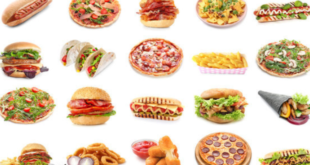Restaurants, barber shops, salons and casinos were among the establishments that began to come back last week, with some significant restrictions placed on them. It remains to be seen if people will go out and spend money or stay home awhile longer.
Two months after Gov. Gavin Newsom issued a stay-at-home order in the face the COVID-19 pandemic that ordered all but essential businesses closed, California’s merchants are beginning to reopen.
Newsom’s four-phase plan to bring business back has entered its second phase, in which retail, some logistics and manufacturing, offices, limited personal services, child care, and other businesses may reopen, according to a statement issued by the governor’s office.
Those businesses, classified as low-risk workplaces, must adhere to strict guidelines, including a detailed inspection of the workplace.
They must also develop a protection plan specific to their facility, train employees to stop the spread of COVID-19, use disinfectant liberally and practice social distancing.
Above all, employees are to stay home if they’re exhibiting COVID-19 symptoms or otherwise feel ill.
Phase Two began officially on May 8, mostly in rural areas, where some restaurants and shops were allowed to reopen. That went off without a hitch.
Three weeks later, most counties have been given permission to reopen shopping centers, churches, barber shops and hair salons.
Next on the list is gymnasiums. The governor’s office is expected to issue guidelines specific to their reopening in a week or so.
Newsom won widespread praise, and was credited by some with saving lives, after he issued the country’s first stay-at-home order. But as the weather warmed and the stay-at-home order extended into May, Newsom faced criticism from business owners who were losing money and regular citizens who wanted a return to normal life.
Certainly reopening state businesses, even in increments, is risky. California reported its 100,000 Coronavirus infection this week. That prompted Newsom to note that the number of people in hospital because of the virus has leveled, and that only five percent of those tested in California for the COVID-19 have tested positive.
No matter the risk, California has officially begun trying to return to normal, albeit cautiously, and the Inland Empire is part of that effort.
Four of the regions destination shopping malls – Inland Center Mall in San Bernardino, the Galleria at Tyler in Riverside, Promenade Temecula and the Mall of Victor Valley in Victorville – reopened last week, although not at full strength. Some stores remained closed, and social distancing and other safety measures were strictly enforced.
At Inland Center, “we’ve seen shoppers ready to get back out and spend and we expect, as time goes on, to welcome more shoppers,” said Terri Relf, the mall’s senior marketing manager, in an e-mail.
Relf did not say when she thought the mall might be back to full strength.
In other sectors, some barber shops and hair salons reopened on Wednesday, one day after Newsom announced the guidelines for that move. Also, several Native American casinos – including the Soboba Casino Resort near San Jacinto and the recently opened Cahuilla Casino near Anza – also reopened.
More restaurants began reopening last week.
For at least one longtime eating establishment in San Bernardino, its return to business last week after being shut down for two months was encouraging, according to one of the restaurant’s managers.
“We served takeout three days a week for one week, but other than that we’ve been shut down since March 23,” said Sharon Gaitan, whose family has owned The Mexico Cafe since 1951.
In all that time, the restaurant at 892 E. Highland Ave. has never been forced to close. During its first two days back in operation, the cafe – which has two dining rooms and some outdoor seating – averaged about half of its capacity of 325 patrons.
That was an acceptable showing under the circumstances, according to Gaitan.
“We didn’t do any advertising while we were out because we didn’t know when we would come back,” Gaitan said. “This thing came out of left field. I thought we had a good first two nights, but coming back will be a slow process. We’re fortunate that we have a lot of loyal customers who have been coming here for a long time.
“That’s a big advantage.”
The Gaitan family is planning to open a second restaurant this summer, in Temecula.
“We were very relieved when the governor said restaurants could start reopening,” Gaitan said. “That meant we can go ahead with our [expansion] plans.”
COVID-19 has done such damage to the economy – including unemployment not seen since the Great Depression – that a fast recovery seems out of the question, said Jay Prag, associate professor of economics at the Drucker School of Management at Claremont Graduate University.
“I think we’re looking at a slow recovery in California, and the Inland Empire, because a lot of people are skittish,” Prag said. “They are still worried about [getting infected], and for good reason. Nationwide, we have 100,000 deaths and one million people who have contracted the Coronavirus. Those are not good numbers.”
California, and the entire country, will experience a “checkmark” recovery, meaning a slow climb up the ladder following a sudden collapse, Inland economist John Husing said.
A lot of people will remain cautious until a vaccine is developed, Husing predicted. “I think we’re looking at least one and a half to two years for a full recovery,” Husing said. “You also have the question of whether they’re reopening things too quickly. Who knows? I know the economic devastation is so bad there’s enormous pressure [on the government] to do something.”
 IE Business Daily Business news for the Inland Empire.
IE Business Daily Business news for the Inland Empire.


